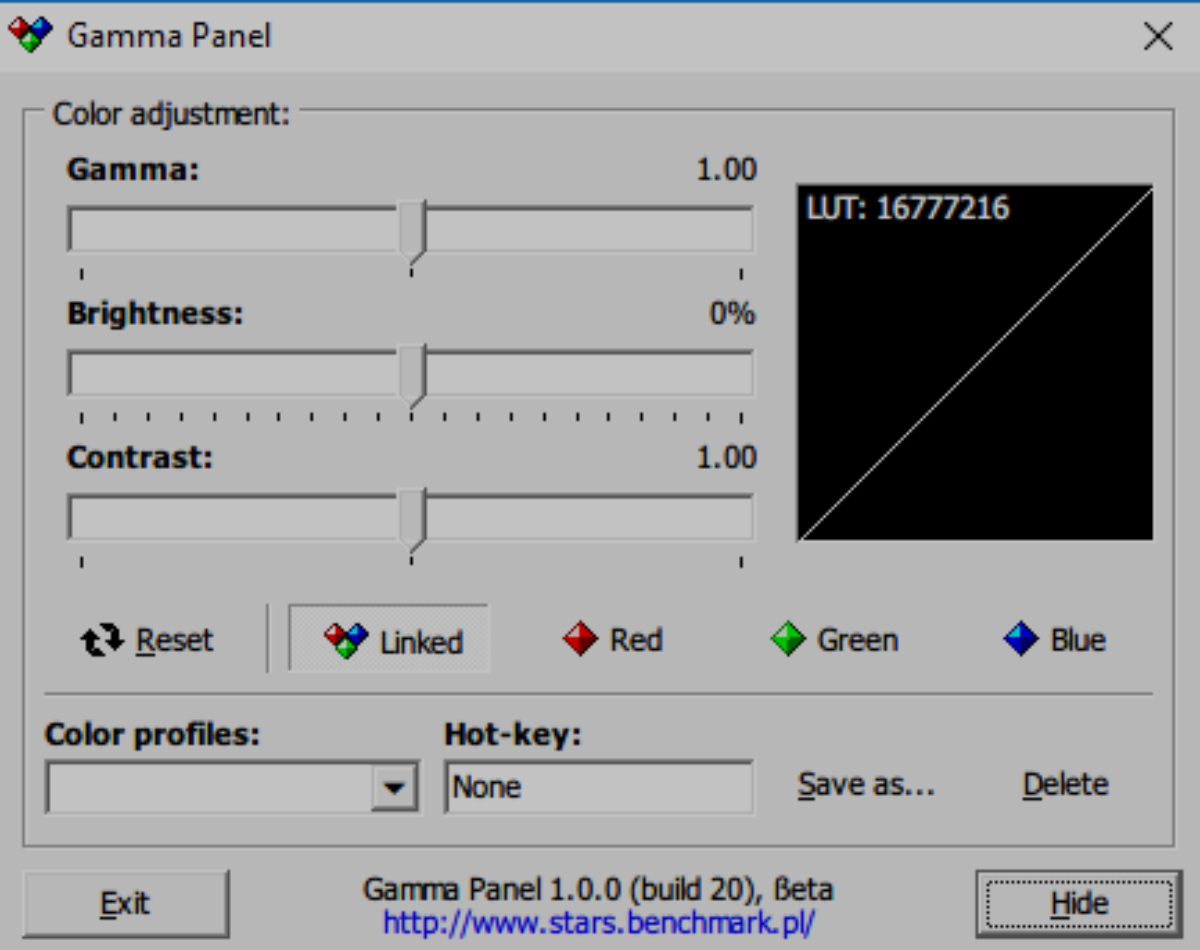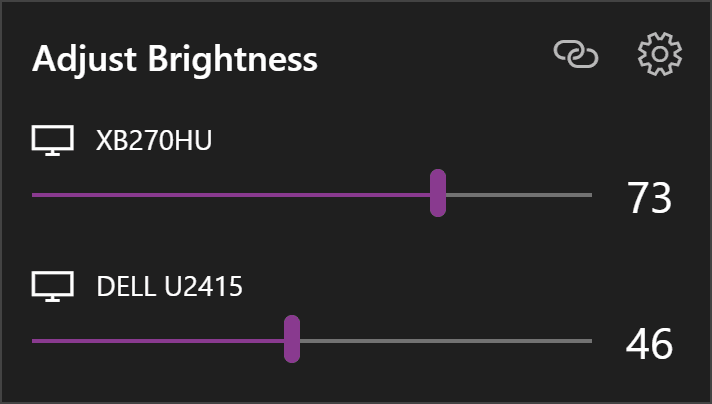

- #DISPLAY BRIGHTNESS CONTROL SOFTWARE MANUAL#
- #DISPLAY BRIGHTNESS CONTROL SOFTWARE SOFTWARE#
- #DISPLAY BRIGHTNESS CONTROL SOFTWARE WINDOWS#
OLED image retention is still a problem and happens more easily at maximum or high brightness levels. First, if you’re using an OLED, you only want to run at high brightness levels for very short amounts. While you won’t set your monitor on fire by running it in “torch mode” for a little while, maxing out the brightness can have long-term effects on your screen. Potential Downsides To Pushing Brightness Above Maximum If your laptop screen is HDR support, you may want to change the Battery options setting to Optimize for battery life if you want to use this feature on battery power. Turning VRR off may introduce screen-tearing in video games, but it will solve brightness and contrast issues.ĭisable Eco Mode or Adjust Power Settings Without local dimming zones, the image has considerably worse contrast, and the overall brightness may have to be quite low to prevent a washed-out image. Some TVs that offer VRR ( Variable Refresh Rate) disable local dimming to achieve it. As you can imagine showing a black screen half of the time can reduce display brightness by up to 50%! Unfortunately, BFI also takes a significant bite out of image brightness.

How we perceive motion and track movement over the screen creates blur, and BFI is an effective way to create crisp motion on flat panels. They hold the entire image perfectly until the next frame is due and switch instantly. Flat panel displays (such as LCD and OLED) suffer from smeary motion thanks to their “sample and hold” nature. Why? The idea is to simulate the pulse and fade of CRT (Cathode Ray Tube) screens. This technology inserts a completely black frame between every true frame of the content.

Chief among these is BFI or Black Frame Insertion. Unfortunately, some of these features also hurt brightness. Many displays now have various features that help improve motion clarity or smoothness. Turn Off Features Like Black Frame Insertion or Variable Refresh Rate If you don’t see this option, it means your display doesn’t support the feature in the first place.
#DISPLAY BRIGHTNESS CONTROL SOFTWARE WINDOWS#
In Windows 10, go to Settings > System > Change Brightness Automatically and turn the setting off. If your display supports adaptive brightness, you can disable this feature. This may eke out a few extra lumens of brightness. Even if your monitor’s brightness setting is at maximum, you can push this slider further. Under Display > Brightness & color, you’ll find a brightness level slider. In most cases, this is only true for integrated laptop displays.įor example, on a Windows laptop, you can go to the Action Center by clicking on the Network, Sound, and Battery icon cluster at the far right of the taskbar, then change brightness by dragging the brightness slider left or right.
#DISPLAY BRIGHTNESS CONTROL SOFTWARE MANUAL#
You can take manual control of your computer’s brightness through your operating system, but only if your display supports it.
#DISPLAY BRIGHTNESS CONTROL SOFTWARE SOFTWARE#
That means you can always adjust your laptop screen brightness with these keys, regardless of what software you are running.Īdjust Your Operating System Brightness and Color Settings This function is independent of your operating system and is hardwired into the firmware of the laptop. Usually, you’ll have to hold the Fn key (function key) while tapping one of these keys (such as the F2 key) to brighten or dim the screen. Look for icons of a sun with an up and down arrow next to it. On a laptop, you can usually adjust the brightness of the screen by pressing a keyboard combination. This setting is independent of anything brightness setting that’s software-based. Then push that setting as high as it will go, or to your desired brightness level. If you’re using an external monitor, use the controls on the display to find the brightness settings.


 0 kommentar(er)
0 kommentar(er)
